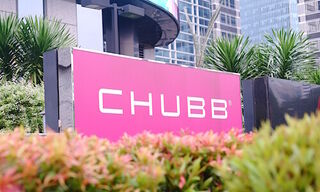Miro Zivkovic: «Are the Good Times Over For Tech Stocks?»
Is the recent tech sell-off just a correction of a «too good to be true» rally or are we in a tech bubble?, Miro Zivkovic at Nordea Asset Management asks.
Technology and social media stocks have enjoyed a bubbly soar since 2016, displaying stellar performances especially after the U.S. presidential election and as new U.S. fiscal policy ramped up shifting investors’ focus to high growth companies. Investor hysteria for these market darlings led to FAANG stocks (Facebook, Amazon, Apple, Netflix and Google) representing almost 9 percent of S&P 500 index expansion in H1 2018.
This irrational ebullience led to historically high Price Earnings Ratios (PER) unseen since the Internet Bubble, even as some of these hot stocks’ net profits were still mired in red ink and Facebook faced regulatory risk. Amazon and Netflix were among the 80+ PER companies.
Risk Appetite Fading
Trade tariffs have changed the mood considerably. Investors’ risk appetite is fading rapidly amid complicated negotiations between the US and its trade partners, including China and Canada, which have triggered concerns about the potential consequences for global growth—emerging markets appear to be particularly at risk. The result has been a «flight to quality» that favours developed markets and more defensive companies with less stretched valuation.
The trend of investors reaching for safe harbours was magnified in October, as global equities tumbled. In addition, the sector rotation continued in both DM and EM equity markets. These behavioural discrepancies were also reflected in FAANG, as the stocks with more stretched valuations experienced a new swan dive—Amazon and Netflix lost around 20 percent in October. Many preferred tech stocks lost more than one-third of their market capitalization, with even sharper collapses seen (e.g. Facebook -38 percent, Nvidia -48 percent, SNAP -69 percent).
Now a Bear Market
So, is this high-tech hangover a simple correction, or are we experiencing something much more severe? In this late cycle phase, investors have started to come back toward high quality stocks that had fallen out of favour after the U.S. election, thanks to their lower sensitivity to the economic cycle, paired with both normalized valuation and higher business resilience.
We could see an acceleration of this trend if markets slide out of control again. However, it is rather difficult to assess if we are facing something more severe, while from a technical perspective it is now clear that high-tech companies, as magnified by the social media sector, are now in a bear market.
Valuation Always Matters
On the other hand, it could be said that historically, valuation always matters and that stretched PER stocks tend to experience mean reversion regardless of their disruptive business or growth rate.
As an illustration, this is what happened after the Internet Bubble, with some .com companies valued at 80/100+ PER, such as AOL which reached a market cap of $222 billion at the edge of this Internet hysteria and was finally bought by Verizon for $4.4 billion in 2015.



























